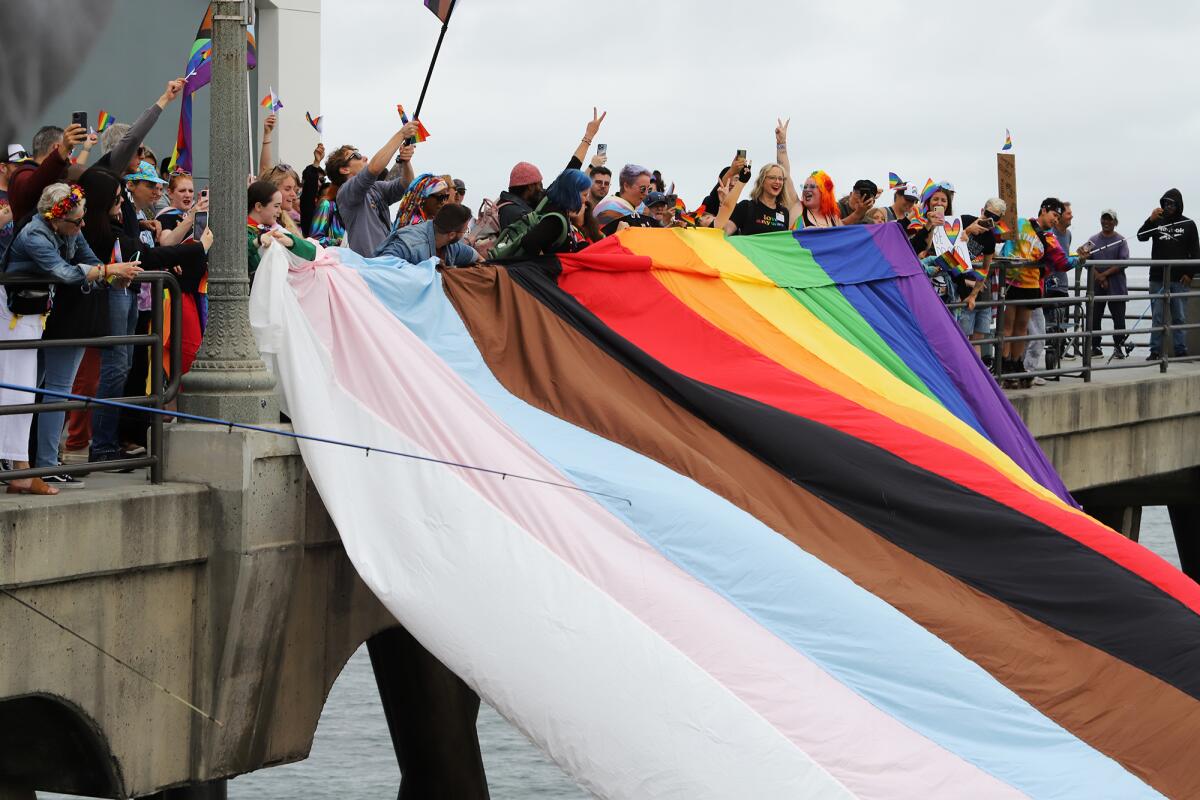
Ever wondered about the colorful history behind Pride? Well, you're in for a treat! Pride isn't just a month-long celebration; it's a vibrant tapestry of struggles, victories, and milestones that have shaped the LGBTQ+ community's journey towards equality and acceptance. From the first brave protest to the rainbow flag's creation, each fact is a testament to the resilience and courage of countless individuals. Pride history is packed with fascinating stories that deserve to be told and retold. So, buckle up! We're about to dive into 19 great Pride history facts that will surprise, educate, and maybe even inspire you. Whether you're a long-time ally or just curious about the origins of this global phenomenon, these tidbits are sure to add depth to your understanding of Pride and its significance in the fight for equal rights.
Key Takeaways:
- Pride originated from the Stonewall riots in 1969, marking a turning point for LGBTQ+ rights and leading to the global celebration of love, diversity, and acceptance.
- Pride has evolved to include a wide spectrum of sexual orientations and gender identities, with young activists and technology shaping its future while emphasizing global solidarity.
The Origins of Pride
Pride traces its origins back to a pivotal moment in history. On June 28, 1969, a series of spontaneous demonstrations by members of the LGBTQ+ community occurred at the Stonewall Inn in New York City. This event is widely considered the catalyst for the modern LGBTQ+ rights movement.
- The Stonewall riots lasted for six days, marking a significant turning point in the fight for LGBTQ+ rights.
Symbols of Pride
Over the years, various symbols have been adopted to represent LGBTQ+ pride and the fight for equality.
-
The original pride flag was designed by Gilbert Baker in 1978. It featured eight colors, each with its own meaning, including hot pink for sex and turquoise for magic/art.
-
As of now, the most recognized pride flag contains six colors: red, orange, yellow, green, blue, and violet.
Global Impact
Pride has grown from a small gathering of activists in New York City to a global movement celebrating love, diversity, and acceptance.
-
The first official Pride parade took place in New York City on June 28, 1970, one year after the Stonewall riots.
-
Today, Pride events are held in every corner of the world, from small towns to major cities, each with their unique celebrations and challenges.
Notable Figures in Pride History
Several individuals have played pivotal roles in advancing LGBTQ+ rights and visibility throughout history.
-
Harvey Milk, elected in 1977, was the first openly gay elected official in California, and he used his platform to fight for LGBTQ+ rights.
-
Marsha P. Johnson, a black transgender woman, was a prominent figure in the Stonewall uprising and dedicated her life to advocating for LGBTQ+ rights.
Legal Milestones
Significant legal victories have been achieved over the years, reflecting society's growing acceptance and recognition of LGBTQ+ rights.
-
In 2003, the U.S. Supreme Court ruled in Lawrence v. Texas that sodomy laws in the U.S. were unconstitutional, a landmark decision for gay rights.
-
Same-sex marriage became legal across the United States on June 26, 2015, following the Supreme Court ruling in Obergefell v. Hodges.
Challenges and Triumphs
Despite the progress, the LGBTQ+ community continues to face challenges, but its resilience and solidarity have led to remarkable triumphs.
-
In many countries, homosexuality is still criminalized, highlighting the ongoing struggle for equality and acceptance.
-
Pride parades have sometimes faced opposition and violence, yet they continue to be a powerful expression of community and solidarity.
-
Transgender rights have become a forefront issue in the Pride movement, with a focus on legal recognition, healthcare access, and protection against violence.
The Evolution of Pride
Pride has evolved significantly since its inception, reflecting changes in societal attitudes and the expanding understanding of gender and sexuality.
-
Initially focused on gay and lesbian rights, the movement now includes a wide spectrum of sexual orientations and gender identities.
-
Modern Pride events often incorporate themes of inclusivity and intersectionality, recognizing the diverse experiences within the LGBTQ+ community.
-
Digital platforms have become crucial in connecting the LGBTQ+ community, especially in regions where Pride events cannot be openly held.
The Future of Pride
Looking forward, Pride continues to adapt and respond to the needs and challenges of the LGBTQ+ community.
-
Young activists are bringing new energy and perspectives to the movement, emphasizing the importance of global solidarity and intersectional activism.
-
Technology plays a key role in the future of Pride, offering innovative ways to celebrate, organize, and advocate for LGBTQ+ rights.
-
Environmental sustainability has become a concern for Pride organizers, leading to more eco-friendly celebrations.
-
As society progresses, Pride remains a vital movement for celebrating diversity, advocating for equal rights, and fostering a sense of community and belonging for all.
A Look Back at Pride's Rich Legacy
Reflecting on Pride's history is like flipping through a vibrant mosaic of struggle, triumph, and unwavering courage. From the Stonewall riots that sparked a global movement to the rainbow flags that now symbolize inclusivity and love, every fact shared here paints a picture of a journey toward equality. These milestones aren't just dates or events; they're reminders of the resilience and solidarity within the LGBTQ+ community. As allies and members, understanding and celebrating these achievements helps us appreciate the depth of what's been fought for and won. Let's carry this knowledge forward, not just during Pride Month but all year round, as a testament to the strength found in unity and love. Remember, every step taken in the past paves the way for a more inclusive future.
Frequently Asked Questions
Was this page helpful?
Our commitment to delivering trustworthy and engaging content is at the heart of what we do. Each fact on our site is contributed by real users like you, bringing a wealth of diverse insights and information. To ensure the highest standards of accuracy and reliability, our dedicated editors meticulously review each submission. This process guarantees that the facts we share are not only fascinating but also credible. Trust in our commitment to quality and authenticity as you explore and learn with us.


